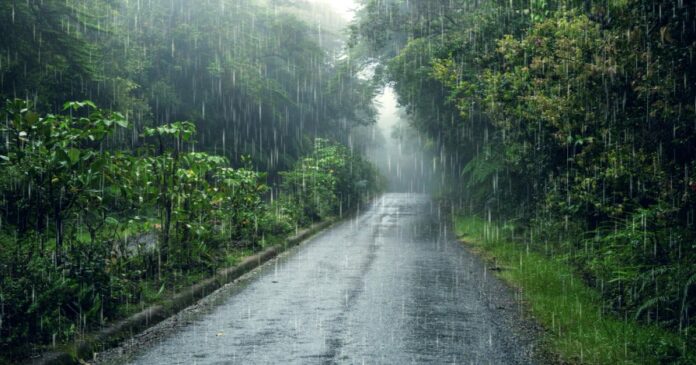Central India Braces for Heavy Rainfall Outbreak
The India Meteorological Department (IMD) has sounded a strong red warning for Madhya Pradesh and parts of central India, forecasting intense to extremely intense rainfall activity between July 6 and July 9, 2025. In several pockets, rainfall levels are expected to surpass 21 centimeters in a single day.
Flood Risks Surge in Specific Districts
Several districts are in the spotlight due to their vulnerability to flooding and waterlogging. These include:
- Chhindwara
- Balaghat
- Mandla
- Seoni
- Shahdol belt
Officials fear that this could lead to flash floods, road closures, and disruptions in local services.
Bay of Bengal System Triggers Monsoon Escalation
The culprit behind this sudden shift in weather is a low-pressure zone forming over the Bay of Bengal, which is now pushing toward the mainland. Its interaction with active monsoon currents is expected to bring widespread downpours and possible thunderstorms across central India.
Preparedness Underway: States Boost Relief Efforts
Government authorities have stepped up emergency plans. The following measures are being implemented:
- Evacuation planning in flood-prone regions
- Activation of disaster control rooms and helplines
- Closure of educational institutions in vulnerable districts
- Coordination with NDRF teams for standby deployment
Infrastructure and Transport Could Be Severely Impacted
The expected rainfall may severely affect daily life, with traffic slowdowns, power supply issues, and train or bus delays. Travelers are urged to stay updated on route changes and avoid venturing out during heavy rain periods.
Public Advisory: Stay Ready, Stay Safe
Authorities have issued the following public safety advice:
- Avoid waterlogged roads and underpasses
- Keep flashlights, first-aid kits, and batteries accessible
- Charge your devices and maintain a stock of essentials
- Track real-time updates from IMD and local news
Climate Trend: Erratic Monsoons Becoming the New Norm
Meteorologists warn that such extreme and erratic rainfall patterns are becoming more frequent due to climate fluctuations. The current monsoon season is another reminder of the urgent need for climate resilient infrastructure and improved urban planning.
Final Word: Alertness Can Save Lives
With unpredictable weather on the horizon, preparedness and public awareness are key to minimizing damage. Residents in high-alert zones are encouraged to follow government instructions and prioritize safety until the monsoon stabilizes.



